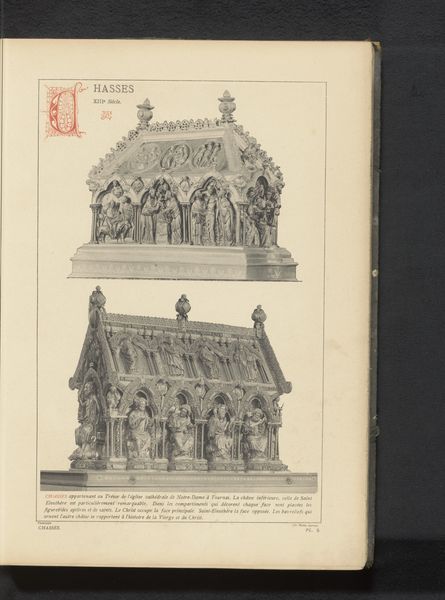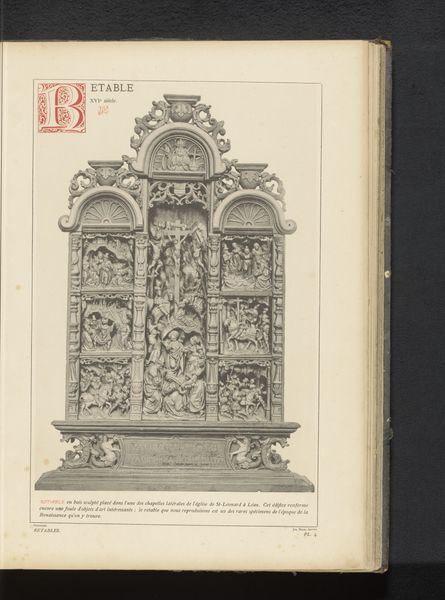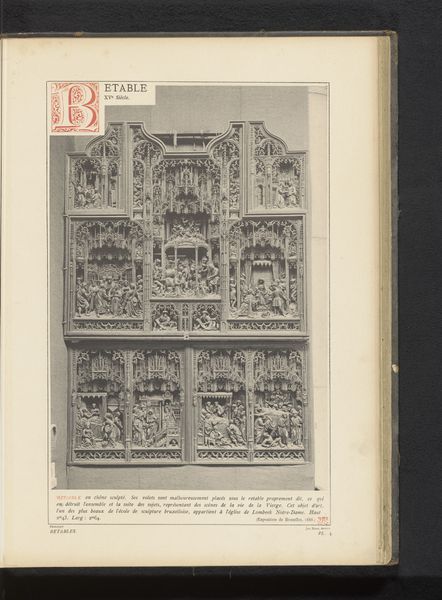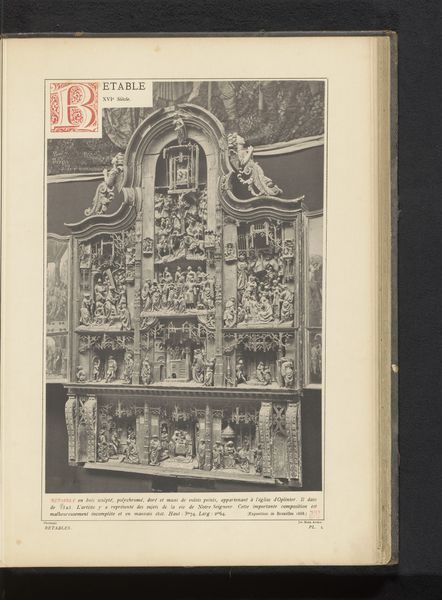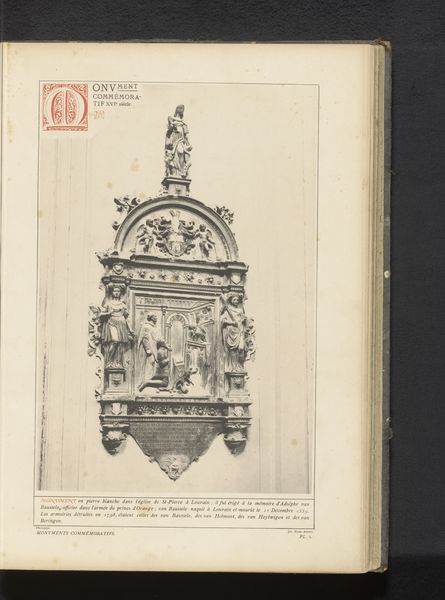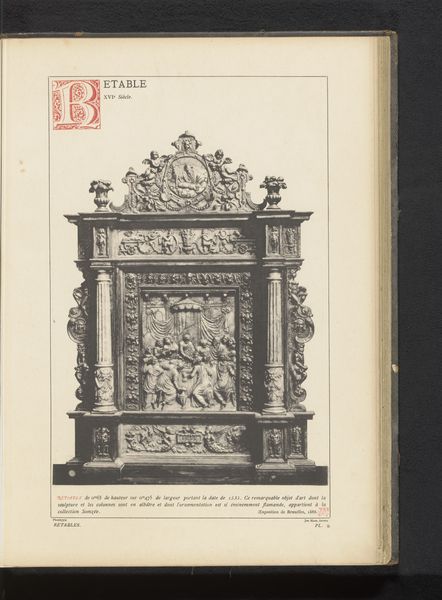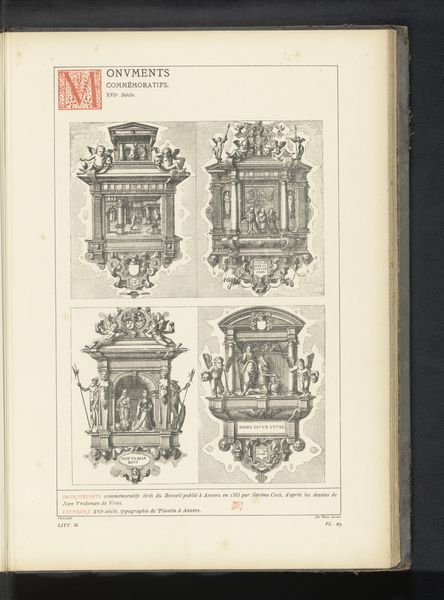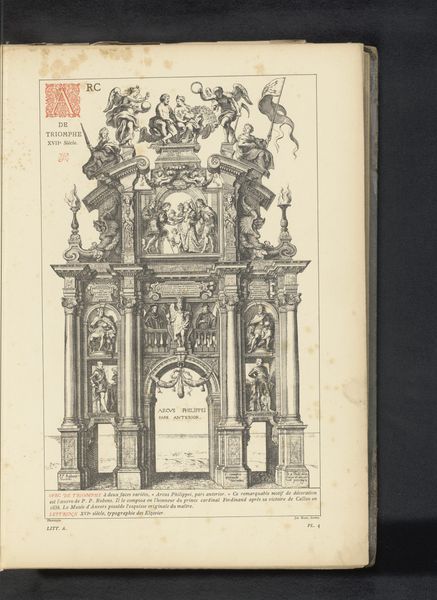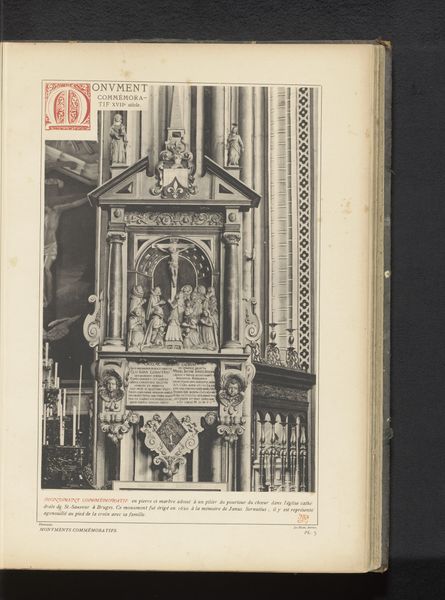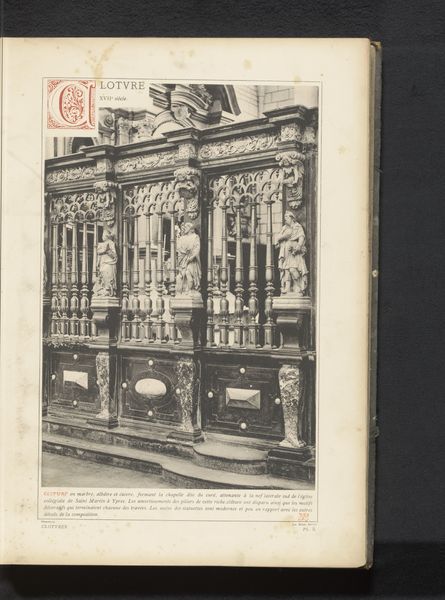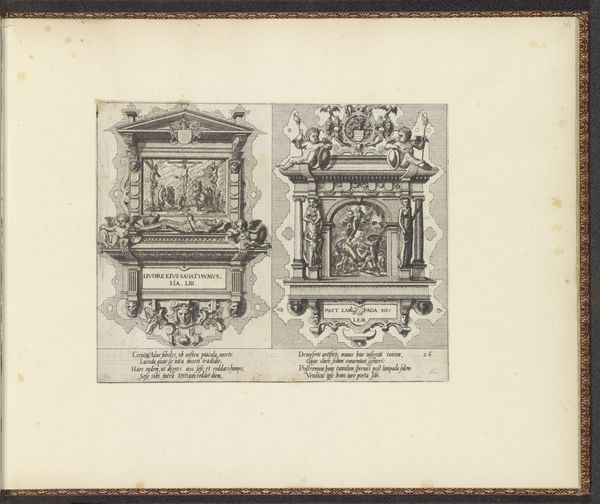
Drie relikwieënkasten uit de Collegiale kerk Onze-Lieve-Vrouw en Domitianus van Hoei, België before 1887
0:00
0:00
print, engraving
#
medieval
# print
#
figuration
#
romanesque
#
engraving
Dimensions: height 341 mm, width 231 mm
Copyright: Rijks Museum: Open Domain
Curator: Before you, we have a printed image showcasing three reliquary shrines, specifically the "Drie relikwieënkasten uit de Collegiale kerk Onze-Lieve-Vrouw en Domitianus van Hoei, België." It predates 1887. Editor: They have a striking solemnity. The linear arrangements of figures and repetitive shapes, give them a sense of otherworldly peace, despite being static prints. I’m immediately drawn to their formal geometric structure. Curator: It's an engraving, capturing objects that carry a weight of history. The very nature of a reliquary implies significance. They weren't mere decoration but focal points for community identity and spiritual practices centered around relics, weren't they? Editor: Exactly. Visually, consider how the printmaking translates the originals— probably rendered in metal or precious materials—into a flat, almost schematic depiction. That shift alone invites us to consider what the engraver emphasizes through line, contrast, and compositional choices. It focuses our attention on its design. Curator: Their importance also lies in understanding the role of the church within that medieval world. These shrines visually asserted the church's authority but were tangible symbols for devotion for everyone to engage with. The image, therefore, operates within circuits of faith and communal identity. Editor: Yes. Furthermore, even in the absence of color, there is still rhythm created by those shapes and the varying degrees of detail. We intuit their function in their style of construction; sacred geometry applied to contain something sacred. It almost makes you believe you can sense their weight from here. Curator: Precisely! They speak to the socio-cultural milieu that gave birth to them. It’s amazing to consider them outside of their immediate church and community; they circulate now as images and reproductions—part of art historical scholarship itself. Editor: I see the formal expression echoes throughout history. Focusing on the composition, each coffer balances symmetry and deliberate disruption—drawing the eye with an elegant tension that really conveys a sense of visual piety even in its printed rendering. Curator: What remains consistent throughout the ages is the continued engagement and reproduction of these symbols—their representation serving a unique purpose to this day, now re-imagined into these very dialogues, centuries after the shrines were first crafted. Editor: A fascinating paradox. So, we see, how the act of creating art lives outside of the tangible and touches history itself, evolving our sense of the composition and intent the further time takes us from the very artwork.
Comments
No comments
Be the first to comment and join the conversation on the ultimate creative platform.
